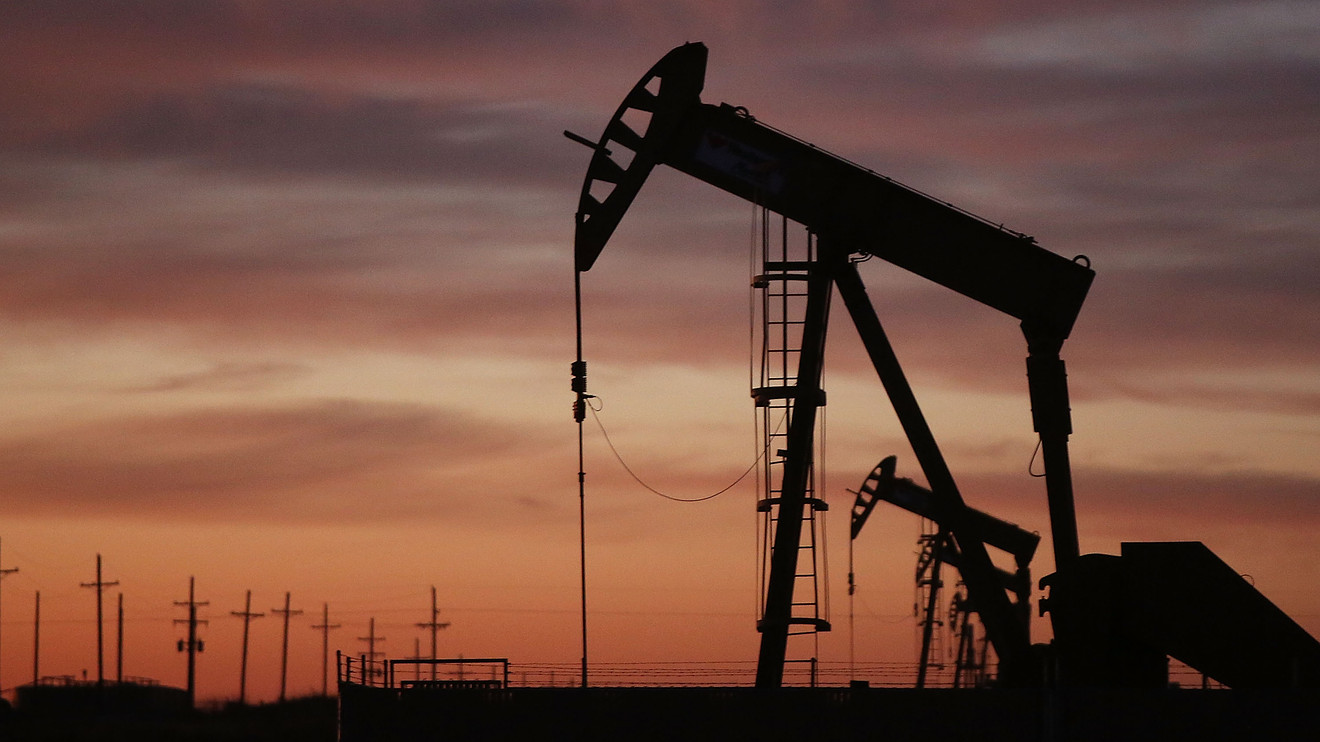
Oil futures moved lower Tuesday as concerns about the coronavirus and its impact on demand fueled a broad aversion on Wall Street to assets considered risky.
Growing doubts that the Organization of the Petroleum Exporting Countries and its allies, including Russia, are inclined to reduce output further to stabilize prices also weighed on prices.
Natural-gas futures, meanwhile, climbed, as forecasts for colder weather for much of the U.S. over the next 14 days boosted prospects for demand, setting prices up for their highest settlement since mid-January.
Oil is “pressured by concerns over the impact of the coronavirus outbreak on oil demand and a lack of any further action by OPEC and its allies to support the market,” analysts at ICICI Bank wrote in a market update Tuesday.
On the New York Mercantile Exchange, West Texas Intermediate crude for March delivery CLH20, -1.08% lost $1.11, or 2.1%, to $50.94 a barrel, while April Brent crude BRNJ20, -1.16% fell $1.33, or 2.3%, to $56.34 a barrel on ICE Futures Europe.
“The risk-off tone was also driving oil on Tuesday…amid fading hopes that OPEC and its allies will be able to agree to emergency production cuts to counter the deteriorating demand outlook,” wrote Raffi Boyadjian, senior investment analyst at XM in a Tuesday research note.
The decline comes after both grades last week booked their first weekly gains in six weeks, with WTI notching a 3.4% weekly rise, while Brent, the global benchmark, saw a 5.2% gain over the period, according to Dow Jones Market Data.
Crude oil traders have been waiting for signs that members of OPEC and other major producers like Russia — a group known as OPEC+ — will move forward a planned March meeting to sometime this month. However, Reuters, citing unnamed sources, reported that there are no indications that such a gathering will take place, heightening fears that the there isn’t sufficient will to dial back production further, in line with an advisory panel’s recommendation to shrink output by a further 600,000 barrels per day.
Russia, one of the largest exporters of crude, has been reluctant to reduce oil output further. OPEC+, is currently under an agreement to cut oil output by 1.7 million barrels per day, which expires at the end of March.
The slump in oil prices comes as the outbreak of COVID-19, the infection that originated in Wuhan, China last year, has sickened more than 72,000 people and killed more than 1,800, according to the most recent data out of China.
Commodity investors are concerned about the spread of the disease because it is expected to harm demand from China, the biggest importer of crude in the world. Infections elsewhere in the world could also harm global uptake of fossil fuels, producing a drag on prices.
Indeed, the International Energy Agency cut its 2020 oil demand-growth forecasts by 365,000 barrels a day, a reduction of 30% to its previous forecast made in January, citing the impact of the outbreak of the novel coronavirus.
In other energy trading, March gasoline RBH20, +0.80% was up 1.1% to $1.6011 a gallon, after gaining 3.9% for the week, while March heating oil HOH20, -1.72% lost 1.2% to $1.6774 a gallon, following a 3.3% advance last week.
March natural gas NGH20, +6.15% soared 6.4% to $1.955 per million British thermal units. The commodity suffered a loss of 1.1% last week, and touched its lowest trade since March 2016. On Tuesday, it was poised for its highest finish since Jan. 17, FactSet data show.
Prices, however, were bouncing back Tuesday “on colder weather outlooks for the western and central US over the next two weeks,” said Christin Redmond, commodity analyst at Schneider Electric, in a daily note.
Still, “technical indicators predict that it will be very difficult for prices to break back above key resistance of $2.00 [per million Btus], especially as the bears still maintain control of trend,” she said.








